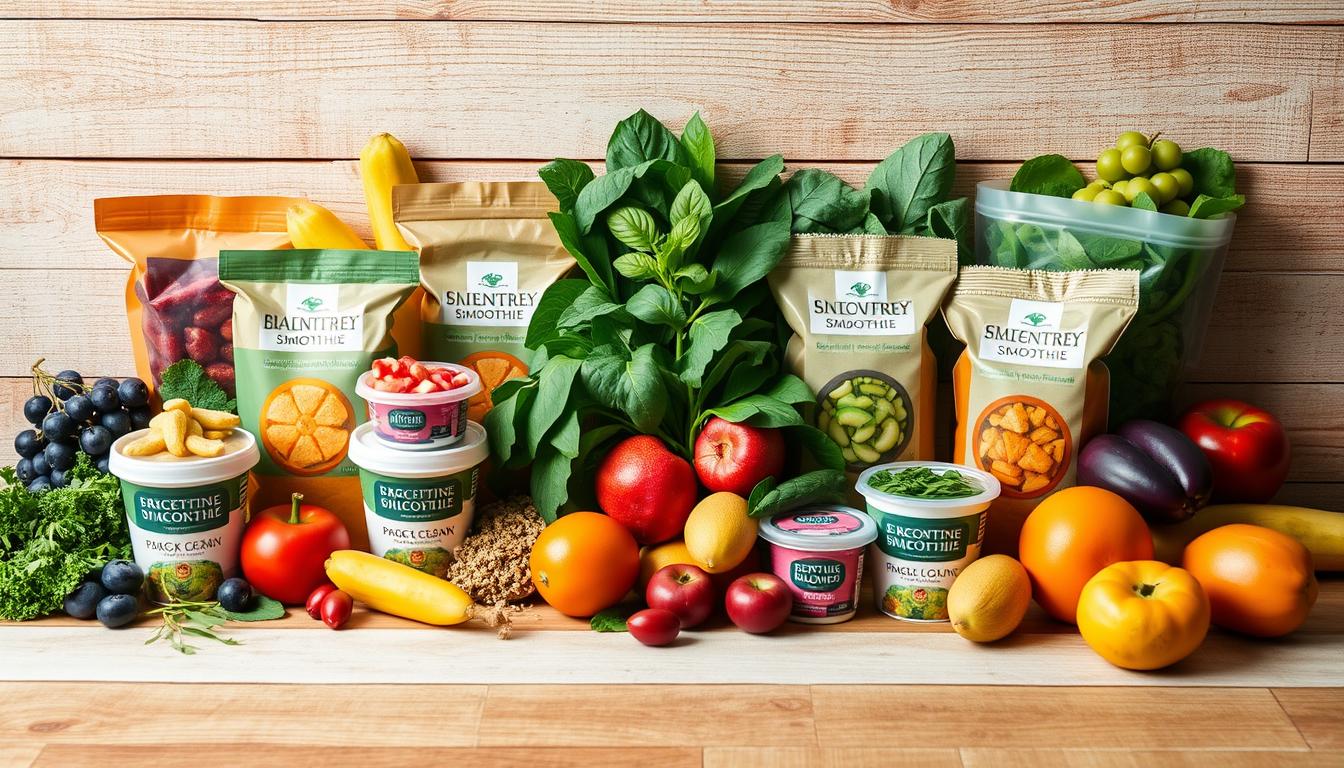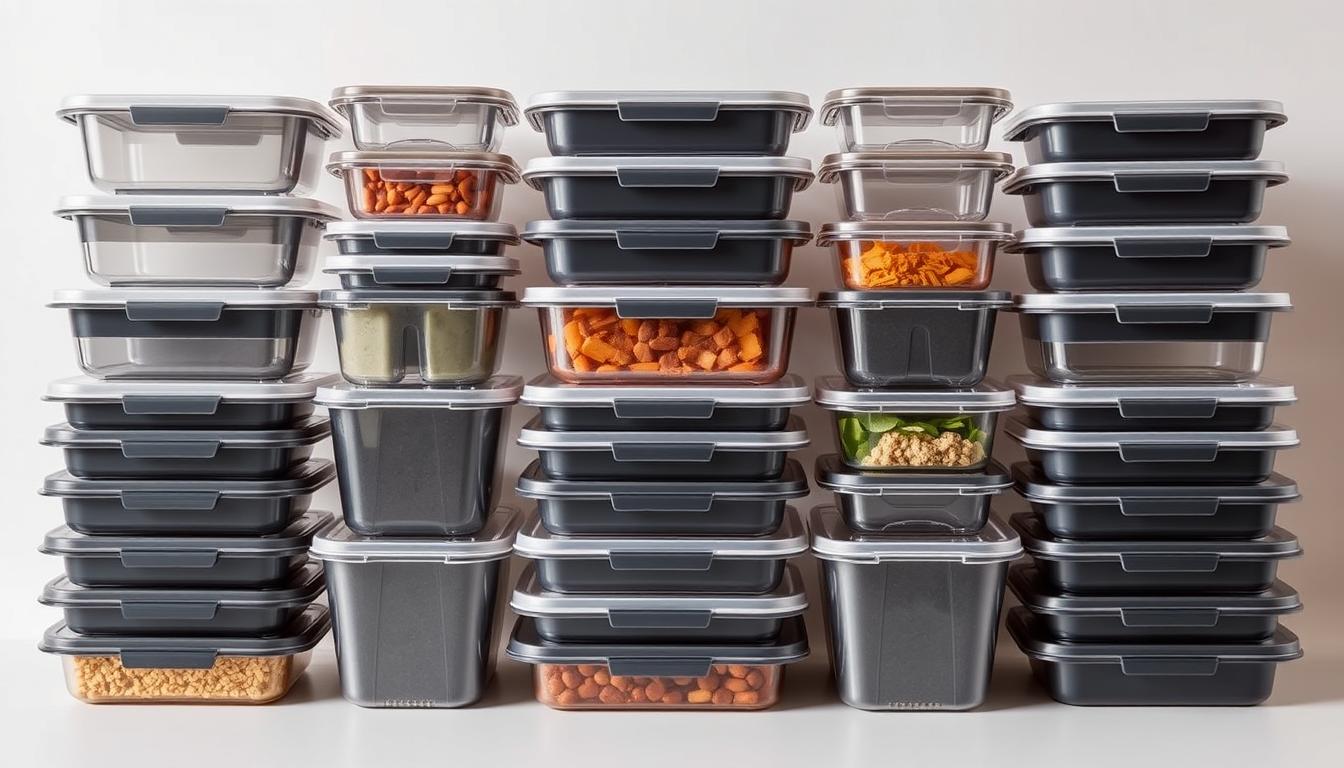The Science Behind Bread Freshness and the Best Bread Storage Methods
Understanding bread structure helps explain why it goes stale
Before diving into storage methods, it’s helpful to understand what makes bread go stale in the first place. When bread bakes, starch molecules absorb water and gelatinize, creating that soft, moist texture we love. Once removed from the oven, these starches begin to crystallize again in a process called retrogradation, pushing water out and causing the bread to harden.
This staling process is different from drying out, though both can happen simultaneously. Staling occurs even in a sealed environment, while drying happens when moisture evaporates from the bread’s surface. Understanding this distinction helps explain why different storage methods work better for different types of bread.
Sourdough bread naturally stays fresh longer due to its acidity, which slows down the staling process and creates an unfriendly environment for mold. Enriched breads containing fats like butter or oil also resist staling longer because the fat molecules slow starch crystallization.
7 Proven Bread Storage Methods
1. Bread Box Storage
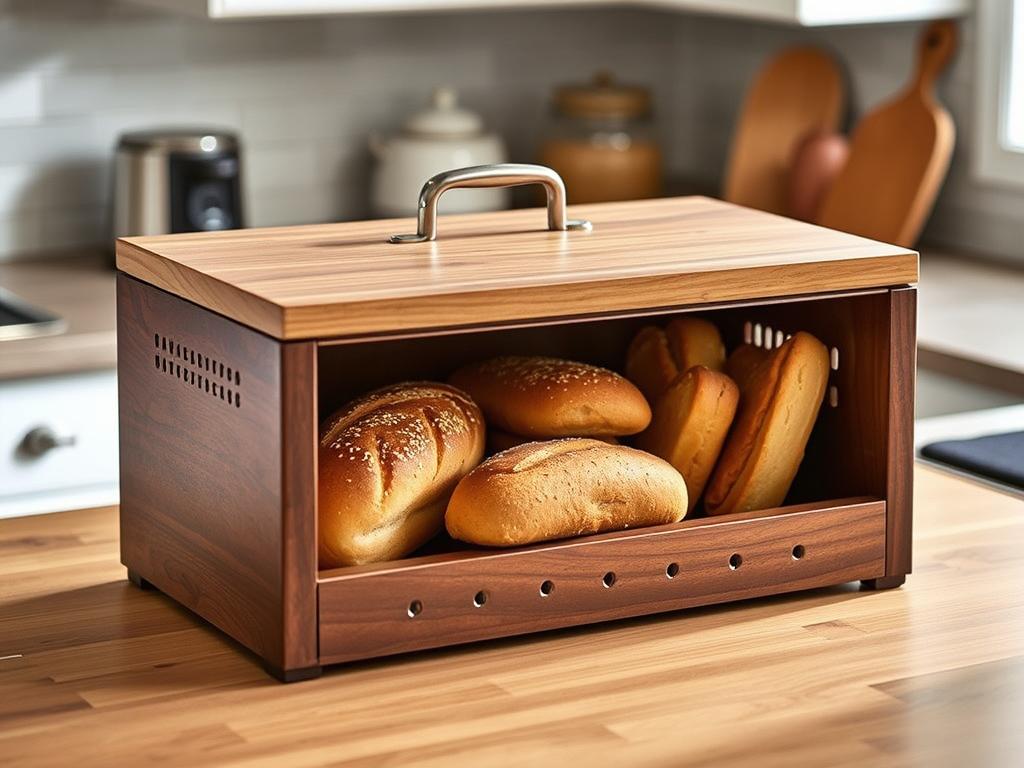
A bread box creates the ideal microclimate for most bread types. It maintains just enough humidity to keep the interior soft while allowing some airflow to preserve a relatively crisp crust. In our testing, bread stored in a quality bread box remained fresh for 3-4 days, significantly outperforming other room-temperature storage methods.
The ideal bread box should have some ventilation to prevent excess moisture buildup while still protecting bread from the drying effects of air circulation. Look for boxes made of wood, bamboo, or ceramic with small ventilation holes.
2. Paper Bag Storage
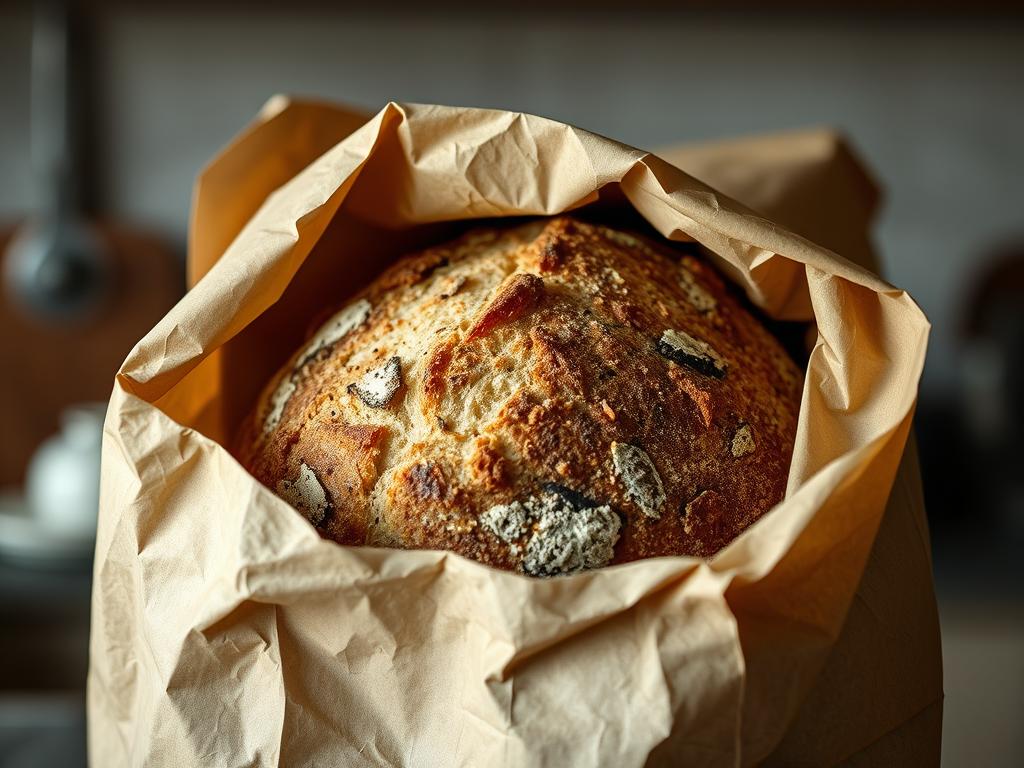
Paper bags work well for crusty artisan breads for short-term storage (up to 1 day). They allow the crust to remain crisp while providing minimal protection. This method is best for bread you plan to consume the same day or the morning after purchasing.
The downside is that paper bags allow moisture to escape quickly, accelerating the drying process. After 24 hours, bread stored this way typically becomes too hard, though it can still be revived by toasting or reheating.
3. Plastic Bag Storage
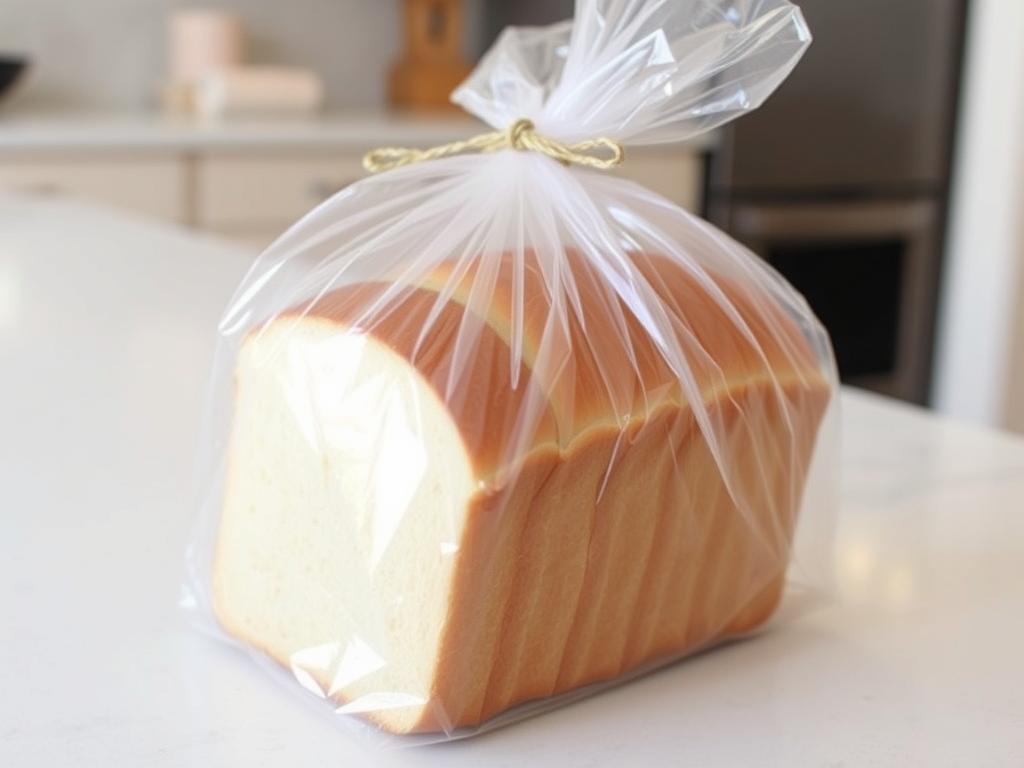
Plastic bags create an airtight environment that traps moisture, keeping bread soft but sacrificing crust crispness. This method works best for soft sandwich breads rather than artisan loaves with crusty exteriors.
The main advantage is moisture retention—bread stays soft for 2-3 days at room temperature. However, in humid environments, plastic bags can accelerate mold growth. If using this method, ensure bread is completely cool before bagging to prevent condensation.
4. Cloth Bag Storage
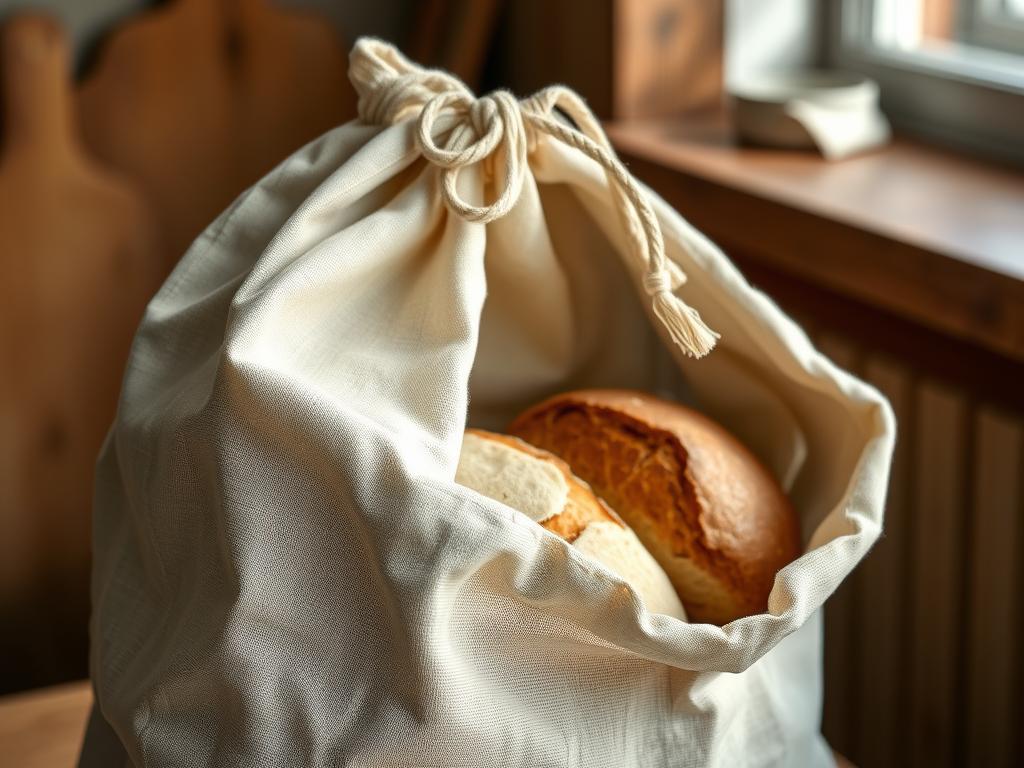
Linen or cotton bread bags offer a middle ground between paper and plastic. They allow some airflow while still protecting the environment. This method works particularly well for sourdough and other crusty breads, keeping them fresh for about 2 days.
The breathable fabric helps maintain some crust integrity while slowing moisture loss from the interior. For best results, look for bags made from unbleached, natural fibers specifically designed for bread storage.
Eco-Friendly Bread Storage
Reusable cloth bread bags are not only effective for keeping bread fresh but also reduce single-use plastic waste in your kitchen.
5. Freezer Storage
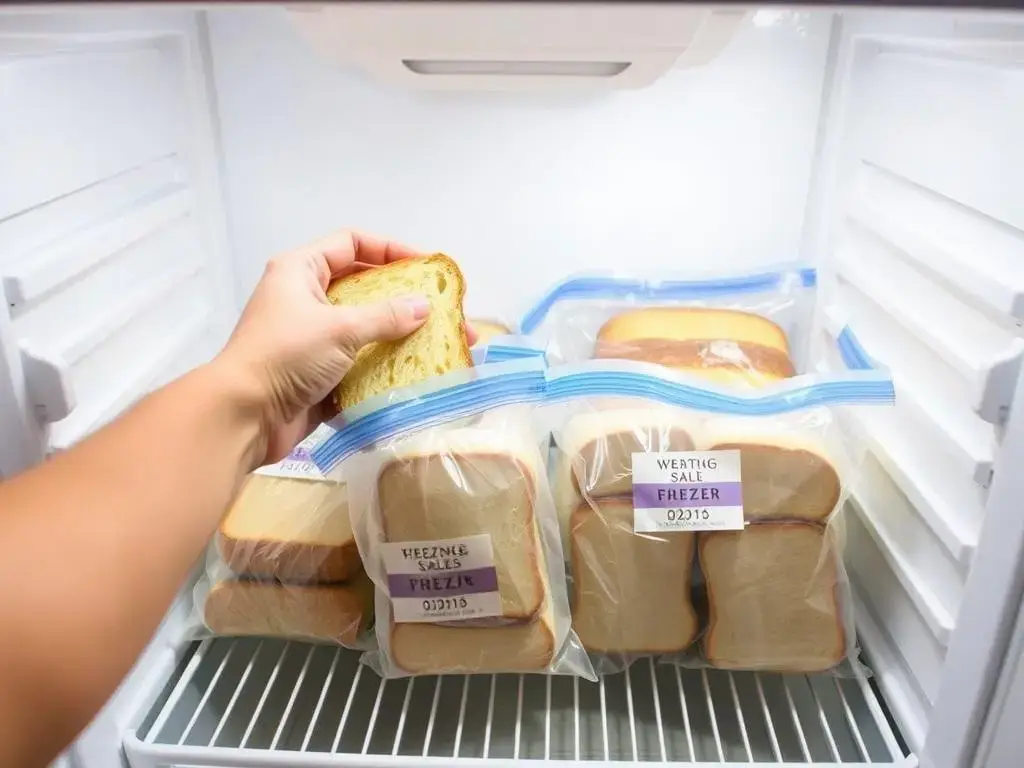
Freezing is the most effective long-term storage method for bread. The freezing process halts starch retrogradation, essentially pausing the staling process. Properly frozen bread can maintain quality for up to 3 months.
For best results, slice bread before freezing and store in portion-sized freezer bags with as much air removed as possible. This allows you to thaw only what you need. When ready to use, thaw at room temperature or toast directly from frozen.
6. Cut-Side Down Storage
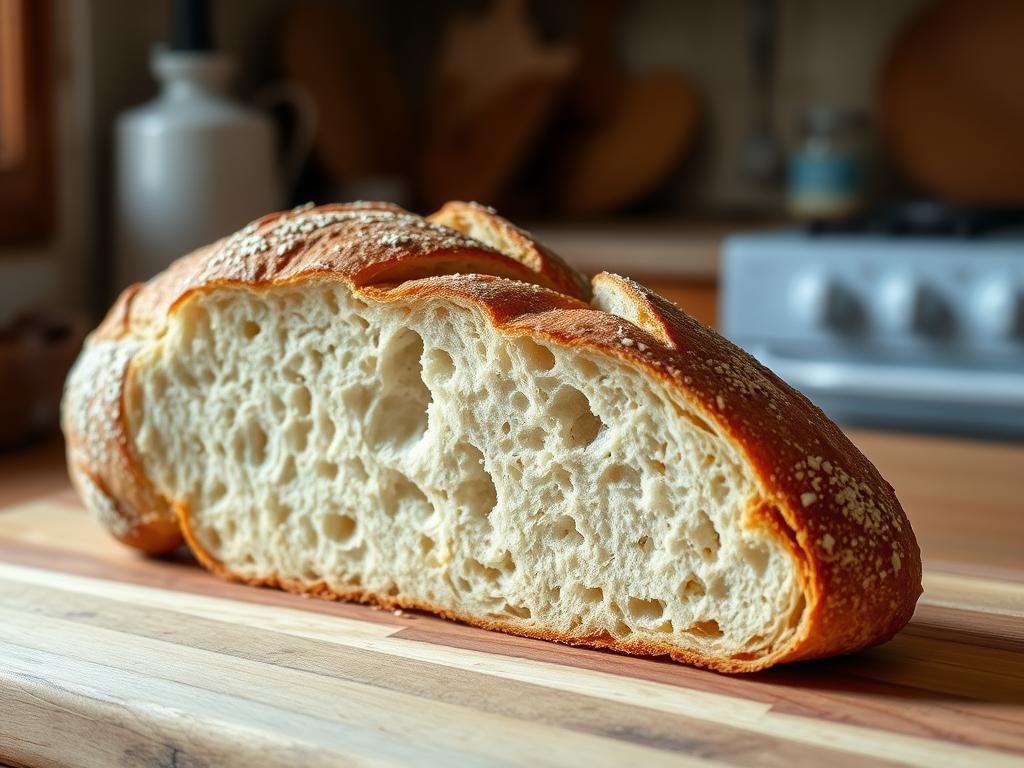
For crusty artisan breads, placing the cut side down on a cutting board creates a natural seal that helps preserve moisture in the exposed crumb. This simple technique works well for short-term storage (1-2 days) of partially eaten loaves.
The crust acts as a natural wrapper, protecting the bread’s interior from drying out. This method is particularly effective when combined with a bread box or cloth cover for additional protection.
7. Beeswax Wrap Storage
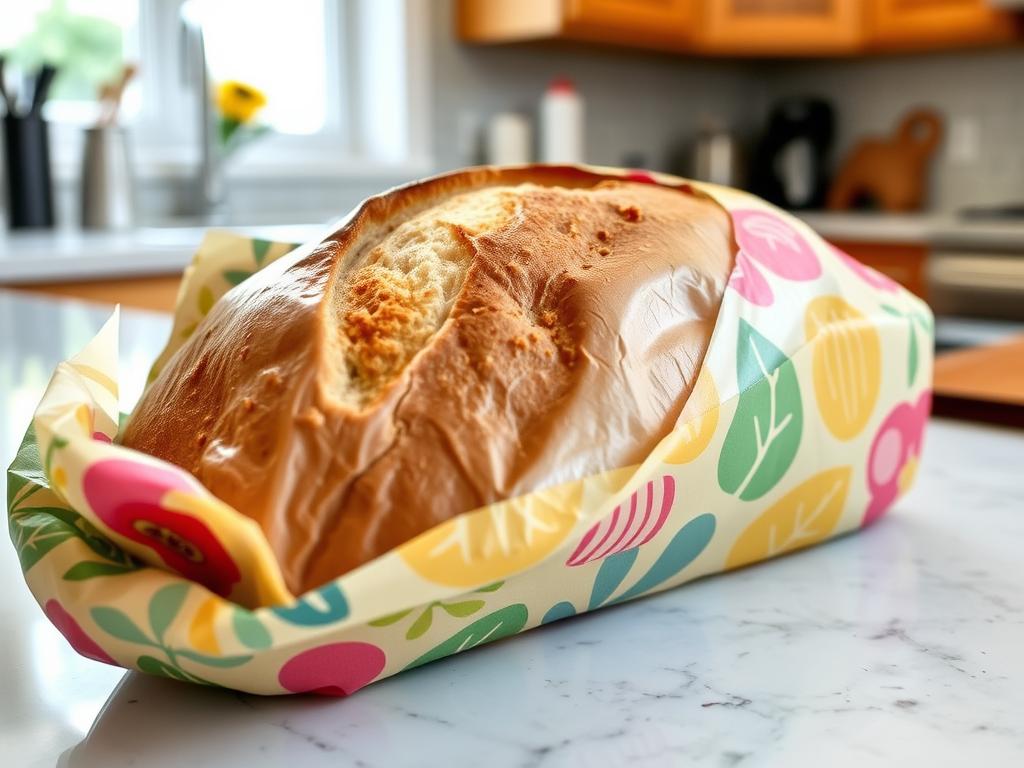
Reusable beeswax wraps have gained popularity as an eco-friendly alternative to plastic. They create a breathable yet protective seal around bread, working particularly well for crusty loaves and partial loaves.
The slight breathability helps maintain some crust integrity while the wax coating provides enough of a barrier to slow moisture loss. Bread stored this way typically stays fresh for 2-3 days at room temperature.
Storage Container Comparison: Which Works Best?
| Storage Method | Best For | Freshness Duration | Crust Quality | Crumb Softness |
| Bread Box | All bread types | 3-4 days | Good | Excellent |
| Paper Bag | Crusty artisan bread | 1 day | Excellent | Poor |
| Plastic Bag | Soft sandwich bread | 2-3 days | Poor | Excellent |
| Cloth Bag | Sourdough bread | 2 days | Good | Good |
| Freezer | Long-term storage | Up to 3 months | Good (after reheating) | Good (after reheating) |
| Cut-Side Down | Partial crusty loaves | 1-2 days | Good | Good |
| Beeswax Wrap | Artisan bread | 2-3 days | Good | Good |
Our testing revealed that bread boxes consistently outperform other room-temperature storage methods for most bread types. However, the best method ultimately depends on your specific bread type and how quickly you plan to consume it.
Temperature and Humidity Recommendations

Optimal Storage Conditions by Bread Type
Crusty Artisan Bread
- Temperature: 65-70°F (18-21°C)
- Humidity: 40-50%
- Best storage: Bread box or paper bag for day 1, then freezer
- Avoid: Plastic bags (softens crust)
Soft Sandwich Bread
- Temperature: 65-75°F (18-24°C)
- Humidity: 35-45%
- Best storage: Plastic bag or bread box
- Avoid: Open air (dries quickly)
Sourdough Bread
- Temperature: 65-70°F (18-21°C)
- Humidity: 40-50%
- Best storage: Cloth bag or bread box
- Advantage: Naturally resists mold due to acidity
Enriched Bread (with fats)
- Temperature: 65-75°F (18-24°C)
- Humidity: 35-45%
- Best storage: Bread box or plastic bag
- Advantage: Stays fresh longer due to fat content
Climate Considerations: In very humid environments (above 60% humidity), bread is more susceptible to mold. Consider refrigeration followed by toasting, or freeze portions you won’t consume within 1-2 days. In very dry climates, bread dries out faster—use airtight storage methods and consider adding a small piece of apple to bread containers to add moisture.
5 Pro Tips from Professional Bakers
1. Slice from the Middle
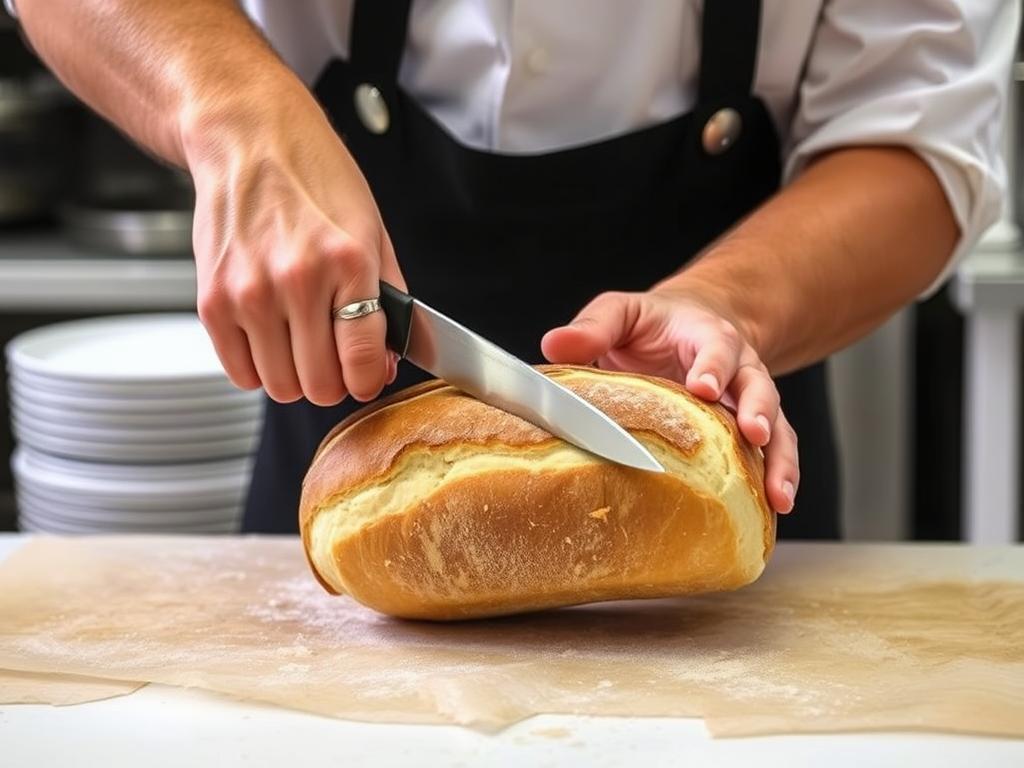
“Instead of slicing from the end, cut your loaf in half down the middle first. Then slice from the cut surface and press the two halves back together when storing. This exposes less surface area to air, keeping your bread fresh longer.” — Maurizio Leo, The Perfect Loaf
2. The Freezer-Toaster Method
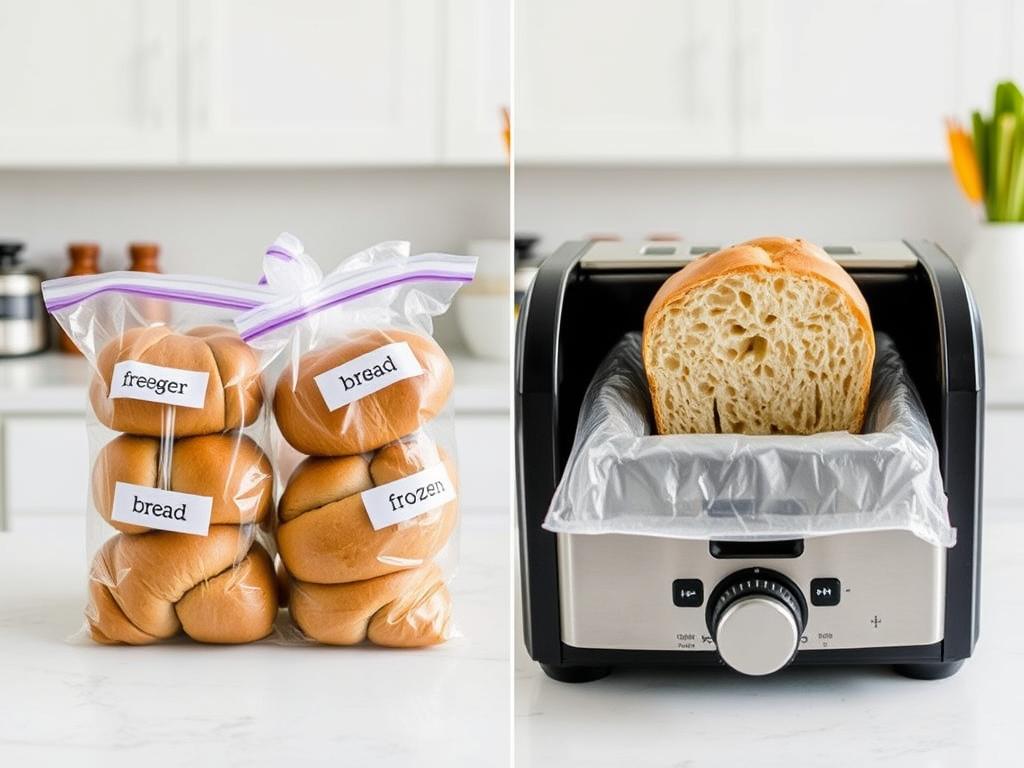
“For the absolute freshest taste, slice your entire loaf, freeze it, and toast slices directly from frozen. This ‘time capsule’ method preserves that just-baked taste better than any room-temperature storage technique.” — Sarah Owens, Sourdough Expert
3. The Water Revival Technique
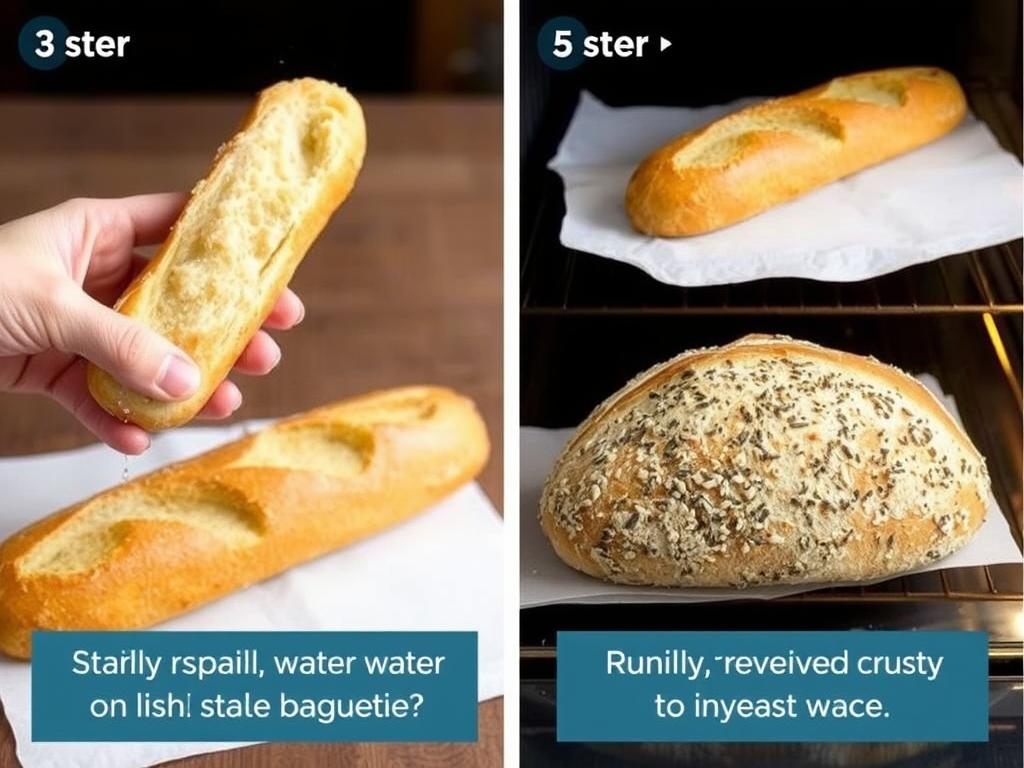
“To revive day-old crusty bread, run it briefly under water to dampen the crust, then bake at 300°F for 5-10 minutes. The steam created inside the crust will rejuvenate the bread, making it almost as good as fresh-baked.” — Chad Robertson, Tartine Bakery
4. The Rice Method
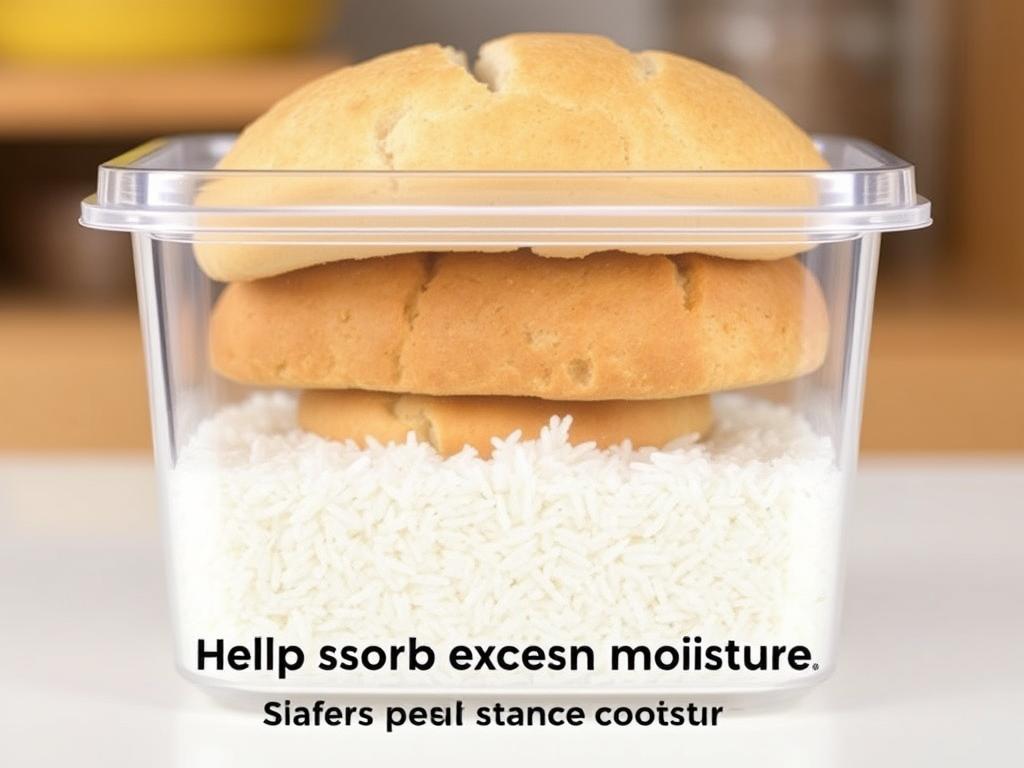
“In humid environments, place uncooked rice at the bottom of your bread container. The rice absorbs excess moisture, helping prevent mold while keeping the bread from drying out too quickly.” — PJ Hamel, King Arthur Baking
5. The Proper Cooling Technique
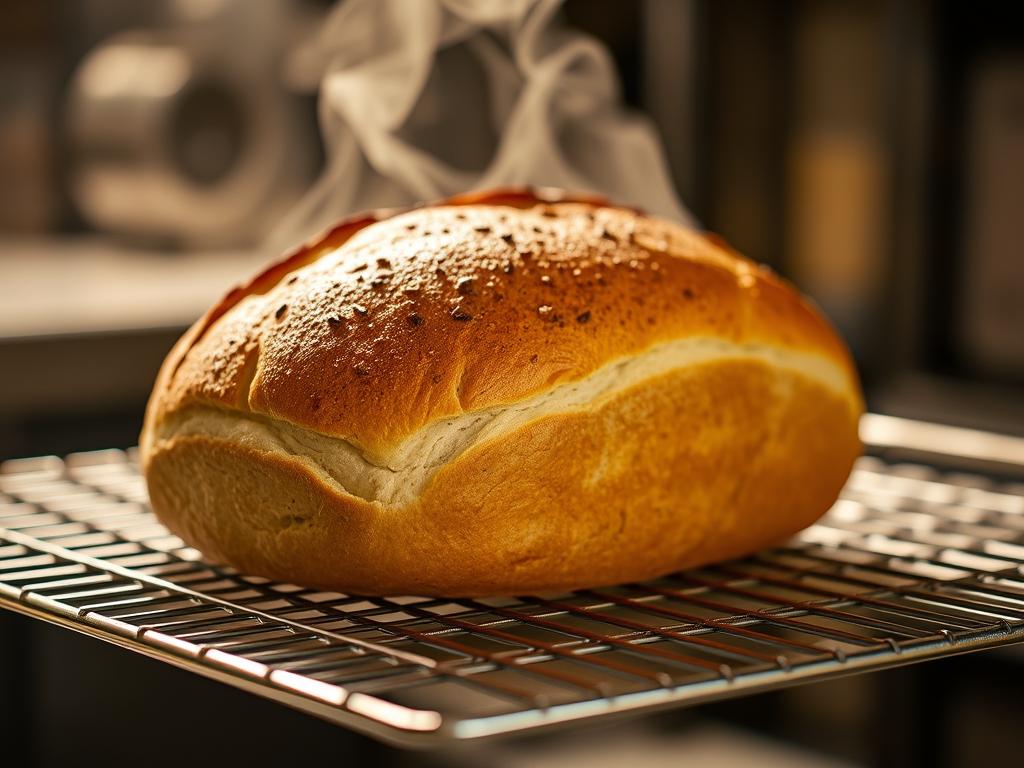
“Never store bread until it’s completely cool—at least 2 hours for a standard loaf, 3-4 hours for larger loaves. Storing warm bread creates condensation, which leads to soggy crusts and accelerated mold growth.” — Jeffrey Hamelman, King Arthur Baking
Debunking 3 Common Bread Storage Myths
Myth #1: Refrigerating bread keeps it fresh longer
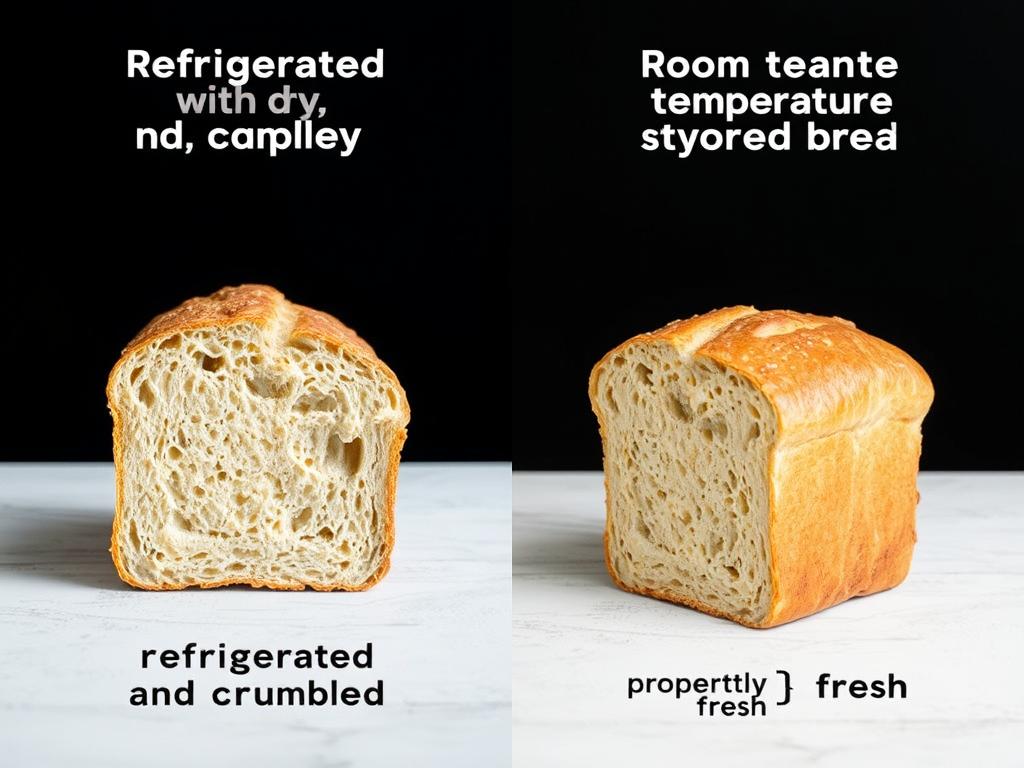
The Truth: Refrigeration accelerates the staling process. While cold temperatures slow mold growth, they speed up starch retrogradation—the process that makes bread firm and dry. The refrigerator’s temperature range (35-40°F) is the worst possible environment for bread texture.
Better Alternative: Store bread at room temperature for short-term use (2-3 days) and freeze anything you won’t consume within that timeframe.
Myth #2: All bread should be stored in airtight containers
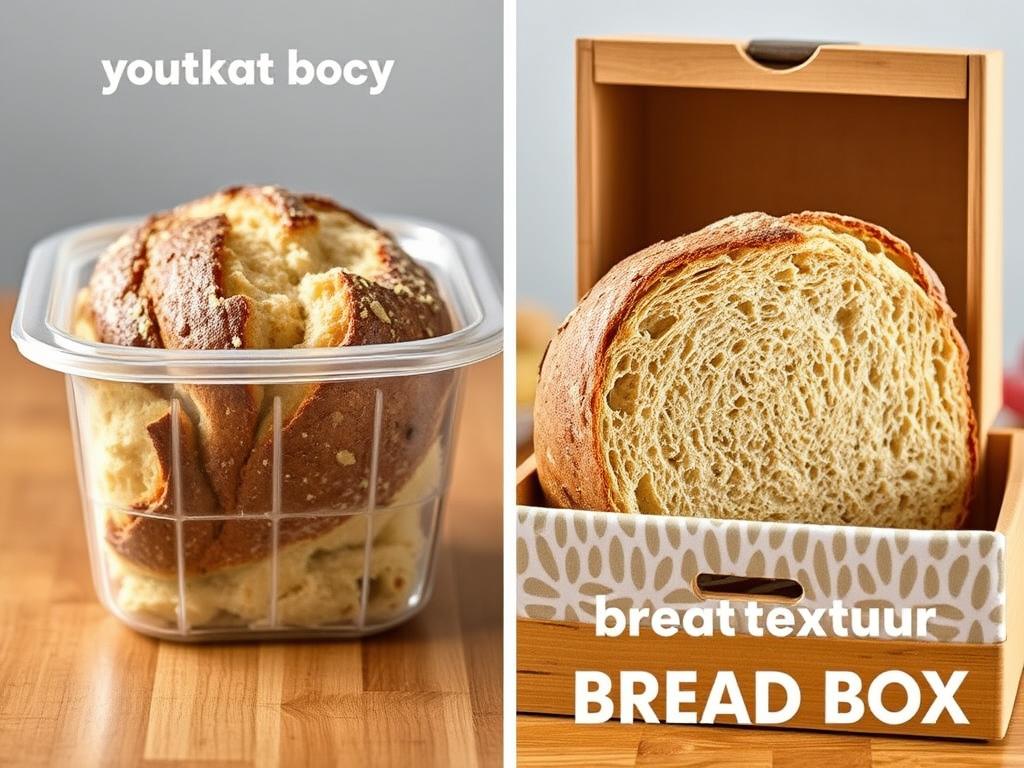
The Truth: While soft sandwich breads benefit from airtight storage, crusty artisan breads need some airflow to maintain their texture. Storing crusty bread in completely airtight containers causes the crust to soften and can create excess moisture.
Better Alternative: Use breathable storage options like bread boxes, cloth bags, or paper bags for crusty breads. Save airtight containers for soft sandwich loaves.
Myth #3: Adding a stalk of celery keeps bread fresh
The Truth: This old wives’ tale suggests adding celery to bread bags adds moisture and freshness. In reality, it creates excess humidity that can promote mold growth and doesn’t effectively prevent staling, which is a structural change in the bread’s starch molecules.
Better Alternative: Instead of adding vegetables to your bread, use proper storage containers designed specifically for bread, and freeze portions you won’t eat within a few days.
Storage Timeline: How Long Will Bread Last?
| Storage Method | Crusty Artisan Bread | Soft Sandwich Bread | Sourdough Bread | Homemade Bread (no preservatives) |
| Counter (unwrapped) | 1 day | 1 day | 1-2 days | 1 day |
| Bread Box | 2-3 days | 3-4 days | 4-5 days | 2-3 days |
| Paper Bag | 1 day | 1 day | 1-2 days | 1 day |
| Plastic Bag | 2-3 days (softens crust) | 3-5 days | 3-4 days | 2-3 days |
| Cloth Bag | 1-2 days | 1-2 days | 2-3 days | 1-2 days |
| Refrigerator | 1 week (needs reheating) | 1 week (needs reheating) | 1-2 weeks (needs reheating) | 1 week (needs reheating) |
| Freezer | 1-3 months | 2-3 months | 2-3 months | 1-2 months |
Note: These timelines assume proper storage conditions and bread that was fresh to begin with. Environmental factors like humidity and temperature can significantly impact storage life. When in doubt, use the freezer for anything you won’t consume within 2-3 days.
Recommended Tools for Optimal Bread Storage
Best Bread Boxes
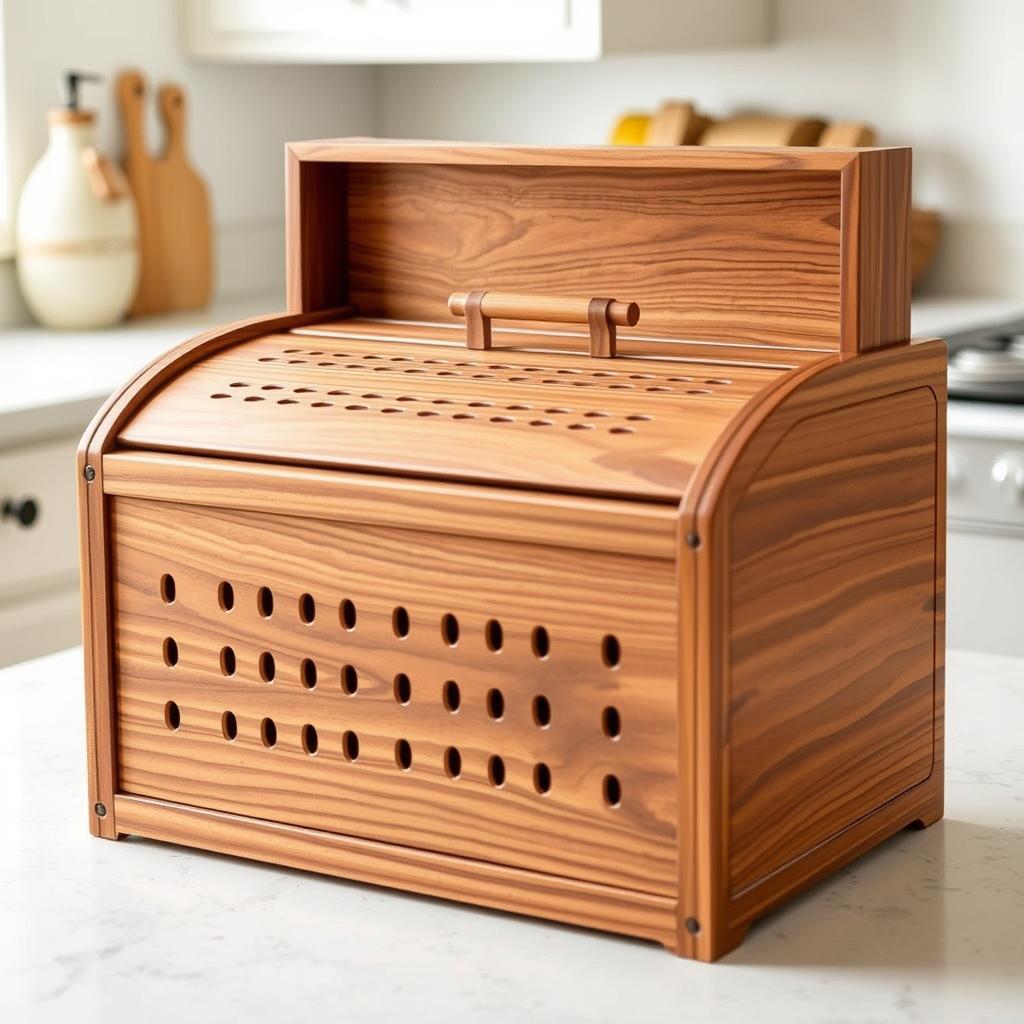
- Look for boxes with ventilation holes
- Wood or bamboo materials regulate humidity best
- Sufficient size for your typical loaves
- Easy-to-clean interior
Reusable Bread Bags

- 100% linen or cotton for breathability
- Unbleached, natural fibers
- Washable and reusable
- Various sizes for different bread types
Freezer Storage Solutions
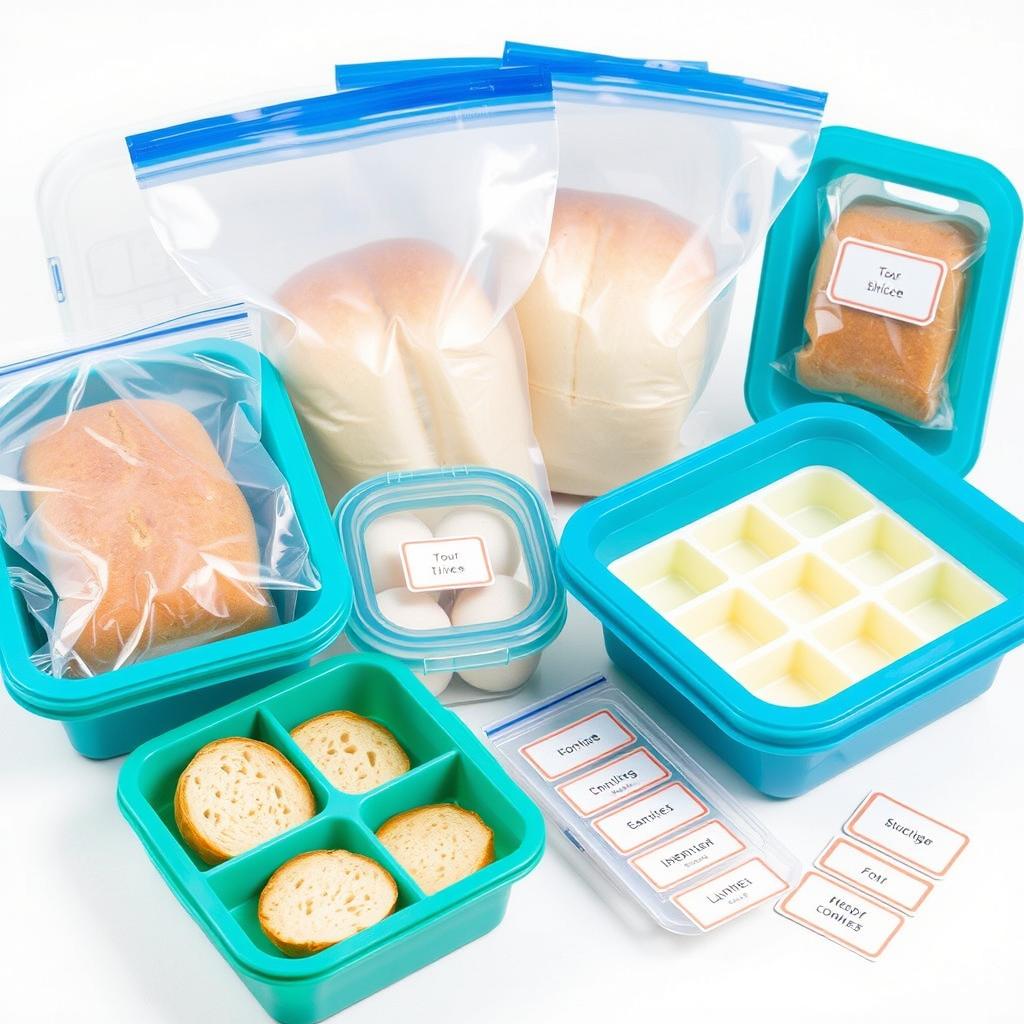
- Reusable silicone freezer bags
- Containers with dividers for slices
- Freezer-safe labels for dating
- Vacuum sealer for longer storage
Conclusion: Finding Your Perfect Bread Storage Method
The best bread storage method depends on your specific needs—the type of bread you typically enjoy, how quickly you consume it, and your local climate conditions. For most home bakers and bread lovers, a combination approach works best: a quality bread box for short-term storage of whole loaves, cloth or paper bags for crusty artisan breads you’ll eat within a day, and freezer storage for longer-term preservation.
Remember that no storage method can make bread last forever while maintaining its just-baked quality. Instead, these techniques help slow the inevitable staling process and prevent mold growth, giving you more time to enjoy your bread at its best. By understanding the science behind bread freshness and implementing these proven storage methods, you can significantly extend the life of your favorite loaves and reduce food waste in your kitchen.
“Good bread is the most fundamentally satisfying of all foods; good bread with fresh butter, the greatest of feasts!”

